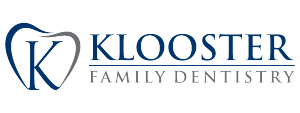If you have traditional dental insurance, you most likely are covered by a great benefits package through your employer, or are a service member or family to a person in the military.
Individuals who are self-employed, who own or work for a small company, or who are on a fixed budget have a tendency of waiting until something bad happens to reach out for coverage. And unfortunately Obamacare hasn’t made it easier for individuals to get dental insurance.
In order to purchase dental insurance under the Affordable Care Act, you first have to buy an Obamacare healthcare policy on the ACA marketplace. Even if you do have an ACA health plan, the cost of dental insurance may not be offset by federal tax credits or other federal financial assistance. Also if your plan is bundled under your healthcare coverage, you probably have a very high deductible.
What do I Need To Know About Dental Insurance?
The typical cost of an individual policy is around $350 a year. For a family, the cost is around $550, annually.
You can buy dental insurance from an independent insurance agent, from an online marketplace such as dentalplans.com, or from the Obamacare health exchanges.
Many dental insurance policies are “100/80/50” plans – covering all of the cost of preventative care such as cleanings, checkups and x-rays, 80% of basic treatments such as fillings, and 50% of more complex procedures such as root canals and crowns.
If you pay out of pocket for two checkups and cleanings and a set of X-rays, your cost, on average, will be around $375-$400, according to the American Dental Association. So, with a dental policy, you’re basically pre-paying for your essential preventive care, with a little assurance built in that if you need a couple of fillings, or chip a tooth, you’re also covered.
But it’s important to remember that dental insurance policies typically cap coverage at $1000 -$1,500 a year. When your dental costs for most procedures go over that limit, you then have to pay for your dental care for the rest of the year. Given that the average cost for a crown is $750-1200, and the cost of a single implant starts at $1500, you can exhaust your annual dental allowance fairly quickly.
Most dental insurance plans are also likely to have a “deducible,” an amount that you will have to pay out of pocket for dental services before your insurance will begin to cover their portion of the costs – typically $50 for an individual annually, and $150 for a family.
Can I get Dental Insurance Immediately?
While you can get a plan that activates quickly, don’t plan on buying dental insurance and getting immediate coverage for pre-existing conditions. With a new-to-you plan, you’ll usually have to wait six months for basic restorative services or a year for major restorative services.
Dental insurance often will not pay to restore teeth that were missing before you purchased the policy; any may not play for work that was underway prior to the policy going into effect.
There are some exceptions to the waiting period imposed for major procedures; a few insurers – notably Cigna- waive the wait policy with proof of continuous coverage within a month or so prior to your purchase of their policy. The assumption being that if you had dental insurance previously, your teeth and gums are probably reasonably healthy.
What Kind Of Individual Dental Insurance Is Best?
Individual Dental Insurance comes in three forms:
- Dental Health Maintenance Organization (DHMO)
o Low premium payments, no annual cap, must use in-network dentists
- Dental Preferred Provider Organization (DPPO)
o Annual cap, may pay a higher % of dental care costs than a DHMO, higher fees for out-of-network dentists
- Dental indemnity insurance
o Highest premiums, annual maximum cap. Small if any deductible, very wide range of dentists to choose from
If you know you’ll need major work at some point in the future, you may want to look for a policy with a high cap. You’ll pay higher premiums, but you probably won’t max out your coverage in one visit. If braces, dentures or bridges are something you or a loved one does or will need, make sure the plan you choose covers them. And check to make sure that the amount of coverage offered makes sense to you – $1000 coverage specifically for braces may be just what you’re looking for, or may not meet your financial needs at all.
Carefully consider your options – dental insurance, a dental savings plan or self-insurance (banking the amount you’d pay for insurance in a health savings account), and then choose the dental plan that’s right for you.
In general, we’ve found that people who primarily need preventative care do fine with dental insurance, while those who need major treatments do better with a dental savings plan.
Much of this information was obtained from dentalplans.com

